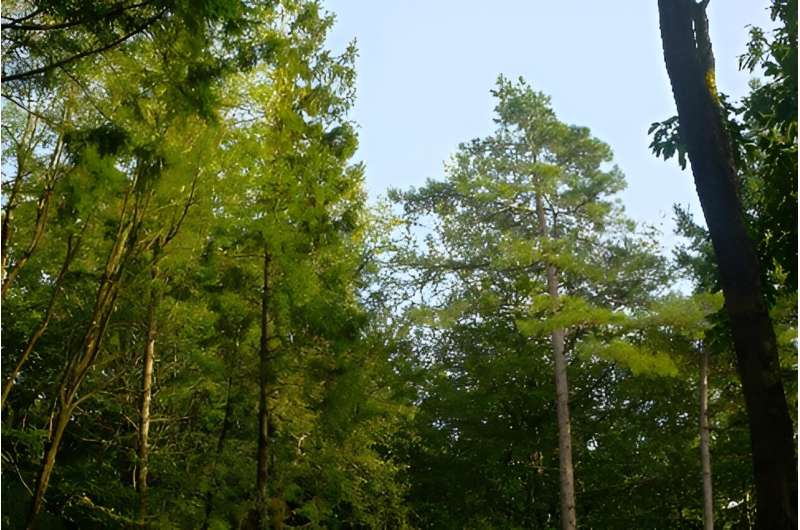This article has been reviewed according to Science X's editorial process and policies. Editors have highlighted the following attributes while ensuring the content's credibility:
fact-checked
trusted source
proofread
Reframing sustainable timber sourcing: New research calls for regenerative approach

Amid growing uncertainty about the sustainability of timber sourcing, new research by University of Bristol experts highlights the necessity of shifting focus from simply using certified, locally sourced timber to a more comprehensive understanding of timber availability and sustainability.
The research emphasizes the importance of adapting timber designs to work within the constraints of U.K. forests, advocating for a regenerative approach to timber use.
Global timber demand is expected to quadruple by 2050. In the U.K. there is interest to meet this demand with an increased use of domestic timber. This approach could minimize transportation emissions, however, it is complicated by the U.K.'s timber availability.
The U.K. has one of the lowest percentages of forest cover in Europe, and with tree planting rates declining in recent decades, the availability of timber could start to decline as early as the early 2030s.
The study seeks to reframe the question of sustainable timber use, moving beyond local sourcing to acknowledge the limitations of U.K. forests. By reviewing current timber use in the U.K. and illustrating the flow of wood through the economy, the research provides insights on how designers can reduce the use of virgin timber and utilize the U.K.'s abundant but underused forest resources.
One of the key findings, is the call for a closer relationship between forestry and timber design. Rather than focusing solely on timber reuse and recycling, the research advocates for a deeper connection between timber designers and the forests that supply their materials. This involves adapting to the U.K.'s transition from conifer monocultures to more diverse and ecologically healthy woodlands, encouraging designers to use a diverse range of timber types.
A framework for the sustainable use of U.K. timber transcends the circular economy model, which maximizes material reuse and recycling, and embraces the concept of regenerative design. Regenerative design aims to balance the needs of society and ecology, promoting mutual prosperity and co-evolution.
Matthew Leeder, from Bristol's Faculty of Engineering, and Ph.D. student in the EPSRC Center for Doctoral Training in Composites Science, Engineering and Manufacturing (CoSEM), is leading the research. He said, "This approach is particularly timely given the global climate and biodiversity emergency, with experts warning of a potential catastrophic forest ecosystem collapse in the U.K. within the next 50 years.
"The study lays the groundwork for a more regenerative use of timber in the U.K., supporting a sustainable supply of domestic timber while promoting the regeneration of U.K. woodlands.
"In a world that seems too resistant to change, it's exciting to work on research that hopes for a more ambitious future, to take a step back from simply focusing on incrementally reducing carbon emissions and to think what the end goal of sustainability research should actually be."
Future research will explore developing sustainability assessments that move beyond carbon accounting to a more holistic evaluation of progress. Essential to this research, is a better understanding of the compromises and mutually beneficial relationships between forest ecology and timber extraction.
Provided by University of Bristol




















